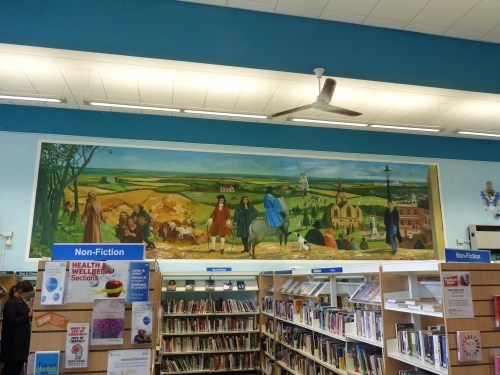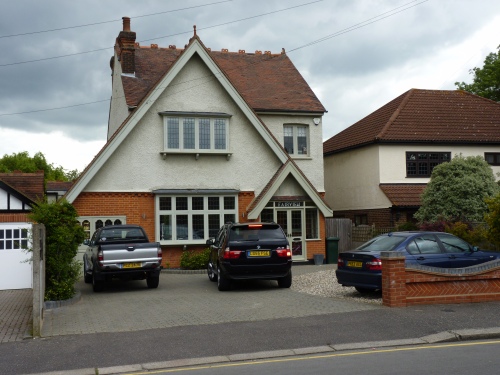Following a call for papers – see earlier post – we can finally reveal our session line-up for the RGS-IBG Annual Conference in Edinburgh in July. We are really excited about the various ways in which our call for papers has been adopted by our speakers – from contemporary and historical perspectives to embodied and representational accounts. The session will be followed by a walking tour in Edinburgh and we include a taster here.
Session
- Ambivalent spaces: women’s expeditionary work 1913-c.1950. (Sarah Evans, UWE)
The paper will draw upon my ongoing PhD research into women’s involvement with Royal Geographical Society-affiliated expeditions during the twentieth century, presenting material from my preliminary data collection and findings. Women’s expeditionary work during this period, in common with women’s geographical work more broadly (Maddrell 2009), has until recently been overlooked in histories of the discipline and in studies of expeditionary fieldwork practices (Rose 1993; Bracken and Mawdsley 2004). The paper will suggest that many of these women occupied an ambivalent position with regard to the largely ‘traditional’ forms of expeditionary fieldwork that they were engaged in, due to their marginal position both in the contemporary academy and in histories of geography. Whilst some of these women, such as Freya Stark, are already fairly well-known, if within popular and literary discourses, analysing the practices of other more forgotten figures helps to contribute to the ongoing project of (re)telling smaller, and gendered, stories of geographical thought and practice (Lorimer 2005; Lorimer and Spedding 2003; Maddrell, 2009). Through discussion of particular expeditions, the paper will discuss some of these women’s emotional, embodied/material and discursive experiences, outlining their frequent enjoyment of their expeditionary fieldwork, alongside their more hesitant and unenthusiastic responses.
- ‘Sharing horizons that are new to us’: planning, freedom and growing up on a 1960s English council estate. (Ian Waites, Lincoln)
English council estates are commonly viewed as problematic and singularly unprepossessing places to live. It might therefore be difficult to imagine someone speaking of the joys of living on a 1960s council estate, but this paper will do exactly that. In May 1964, when I was three years old, my family and I moved into a new house on the just completed Middlefield Lane estate in Gainsborough, Lincolnshire. This is where I spent my formative years during the 60s and 70s, living, playing, hanging around, and growing up. This paper will argue that the ‘form’ of the estate – its situation and layout – ‘functioned’ as a crucial influence on my development, giving me an enduring sense of space, freedom and well being. From there, the paper will consider a more challenging and distinctive line of enquiry – of ‘feeling’, of what the estate felt like for a child at that time. As such, the paper will be unashamedly and enthusiastically autobiographical and lyrical in character, but it will also be underpinned by theories on autobiographical memory and child development in the hope that such approaches can give us a deeper and more nuanced understanding of these estates and their original intentions.
- Strangely familiar: Parkour, Freerunning and extremes of mundanity. (Kate Evans, Swansea)
Since 2002, the related practices of Parkour and freerunning have become a familiar feature of many British cities, and indeed worldwide. Cinematic, media, and online depictions of the practices often portray thrilling and spectacular acts of daring and physicality. Yet for many traceurs (as those who practise parkour are known), the reality of parkour is an intimate and subtle process of embodied and emotional exploration of their bodies and the architectural landscape, where undramatic acts and minutiae are practised with almost tedious repetition. Whilst the process of repetition itself may be experienced as mundane and/or meditative, each repetition is also a microcosm of diverse, and at times profound, emotional and physical sensations. This paper considers the extremes of embodied and emotional sensitivity that are interwoven into the more subtle and enduring aspects of parkour as an intimate engagement with space and place, and considers how, through the drilling of mundane acts, traceurs gain embodied understanding if themselves, whilst coming to know and care for the everyday spaces and terrains with which they engage.
- ‘Greetings from’: postcards from the field. (Ceri Price, Bristol)
Civic pride is easily detectable in official representations. Less accessible are the everyday emotional attachments of local enthusiasts who manifest often unremarked pride in the places in which they live. A new Bristol museum challenged residents in ten neighbourhoods to produce ‘Greetings from’ picture postcards to showcase what they believed to be special about their locality. Some local groups, many of whose members are highly knowledgeable about their communities, produced postcards which confirmed perceived expectations; others deliberately challenged them; all were passionate about their home spaces. Yet, as most groups held firm views on what was considered to be appropriate postcard subject matter, the resulting postcards actually highlighted broad similarities between areas, rather than distinctions. I demonstrate how groups created what they believed to be ‘true’ portraits of their neighbourhoods, but how what actually resulted were idealized, other-directed, images, bearing little resemblance to the specificities of the locales’ everyday geographies. I examine the seeming paradox of embedded enthusiasts producing unrepresentative representations and, through this fieldwork, address questions of place, placelessness, and non-place in the context of amateur knowledges and productions, noting that notwithstanding the creativity of such projects, everyday enthusiast knowledges often remain configured by dominant representational strategies.
- Cultures of Architectural Enthusiasm: Fieldwork and exploration with The Twentieth Century Society. (Hilary Geoghegan, Exeter; Hannah Neate, UCLAN; Ruth Craggs, SMUC)
This paper introduces a new research project that investigates the cultures of enthusiasm surrounding 20th century architectural heritage in the UK. Focusing on The Twentieth Century Society (who work to safeguard Britain’s post-1914 architectural heritage), we highlight the important yet underexplored role played by their volunteer guides in articulating, experiencing and interpreting 20th century architecture, specifically focusing on walking tours. Revising and extending work by geographers, historians and contemporary archeologists, this paper attends to the conceptual intricacies of enthusiasm, fieldwork and exploration in relation to buildings.
Walking Tour: Modernist Edinburgh To complement the session “Geographies of Enthusiasm: Exploration and Fieldwork” the convenors invite you to join them on a walking tour that will focus on Edinburgh’s twentieth century architecture. The tour will commence at the conference venue. It will begin by looking at University of Edinburgh buildings around George Square (focusing on 1960s expansion: Sir Basil Spence, Glover and Ferguson’s library, Robert Matthew’s Hume Tower, and Alan Reiach, Eric Hall & Partners Appleton Tower). It will then proceed to take in other twentieth century sites within short walking distance.










